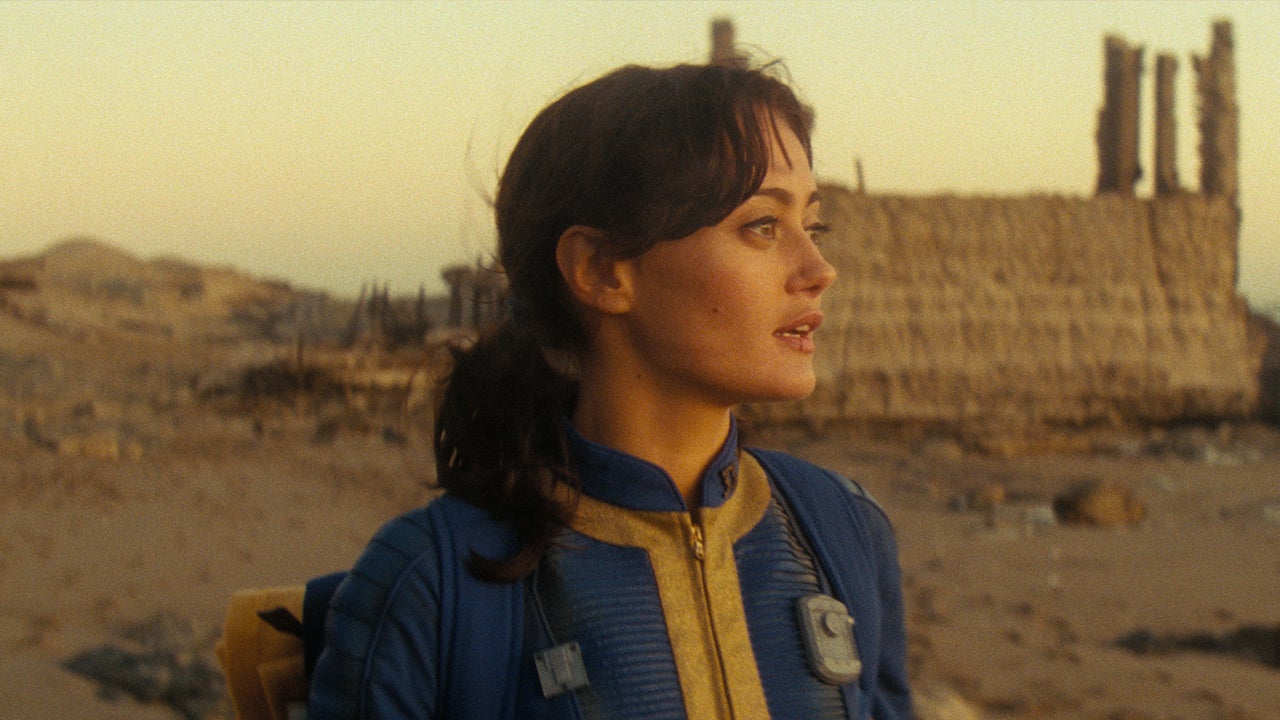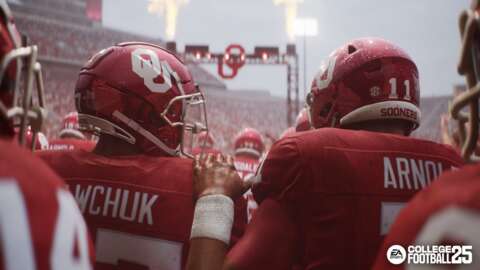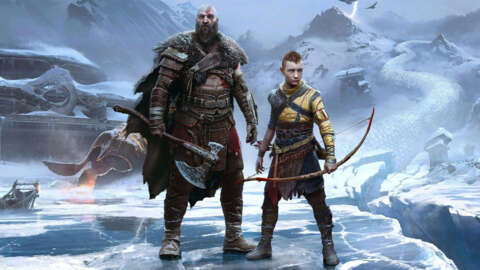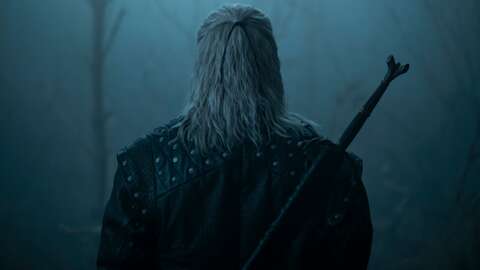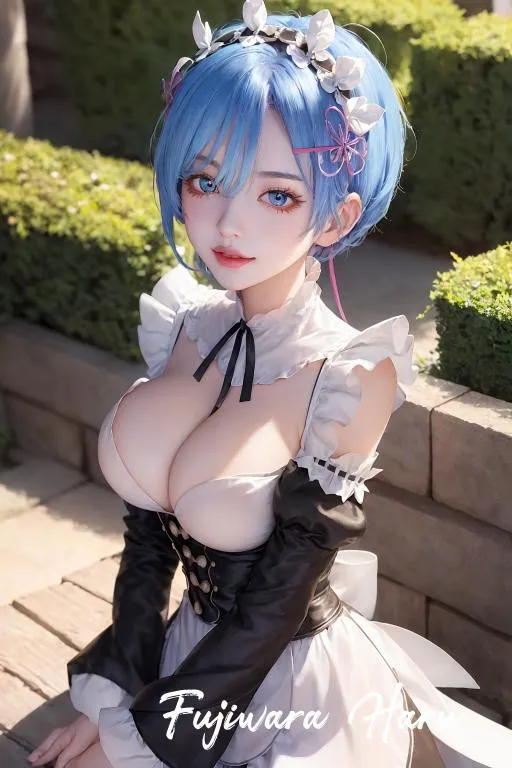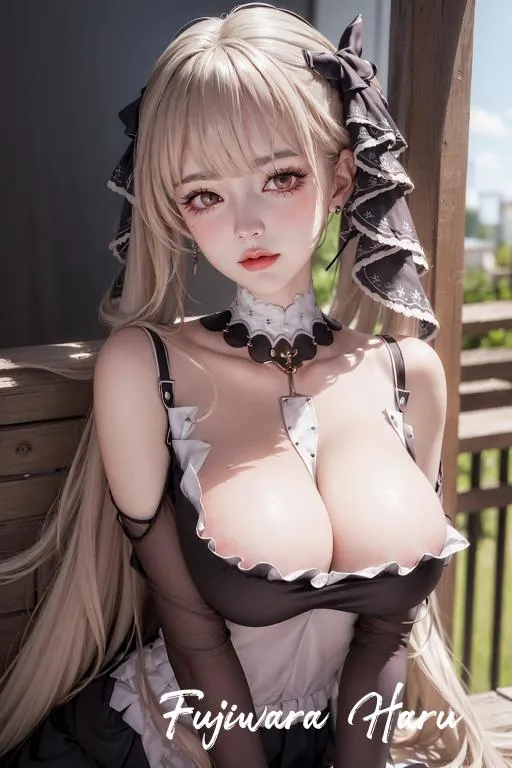On October 23, 2077, the world is plunged into thermonuclear war. Atomic blasts strike most of the major cities in the United States, and the civilians not killed outright either flee to underground shelters or are left to fend for themselves in irradiated wastelands.
Based on that description, you’d be forgiven for thinking that Fallout is another story about grizzled survivors doing whatever it takes to see another sunrise. Think Joel from The Last of Us. Think Max Rockatansky from Mad Max.
Think anyone – literally anyone – but Lucy MacLean.
“They actually described her as Leslie Knope meets Ned Flanders,” says Ella Purnell, who plays Fallout’s idealistic hero. According to Purnell, the showrunners asked for a chance to pitch Lucy to Purnell even before the actress had a chance to see the script. “And thank God they did,” she adds.
That’s because Fallout is a different kind of post-apocalyptic story. Based on Bethesda Softworks’s long-running video game series of the same name, Prime Video’s new show about life 200 years after the end of the world has assembled a murderer’s row of talent both behind and in front of the camera. And better yet, it’s the brainchild of executive producer Jonathan Nolan, whose work on the Dark Knight trilogy and HBO’s Westworld series have primed the pump for this kind of ambitious storytelling.
As he prepares for the release of his series on April 11, Nolan reflects on the magic of his own first playthrough of Fallout 3. “I knew almost nothing about it,” Nolan, who also directs the first three episodes of the series, explains, “and could not believe the ambition, the scope, the scale, and all the different textures.”
But what makes Fallout unique to Nolan – and the millions of people who have played the various games – is the tone, which he describes as “simultaneously epic, dramatic, dark, emotional, but also political, satirical and crazy, deeply funny – almost goofy.”
Setting the Stage
Fallout may offer a grim vision for the future of mankind, but don’t worry – it’s not our future. Not exactly, anyway. Fallout takes place in an alternate universe, one whose history diverged from our own in the years following World War II. Steeped in the tradition of retrofuturism – a mode of storytelling that builds on the now-absurd imaginings of 1950s science fiction – Fallout explores a world where both robots and Bob Crosby are humankind’s greatest accomplishments.
And while this Fallout does spend a good amount of time on the events before the Great War – more on that in a minute – the show shares the games’ vision for humanity’s new future over our sudden collapse. “They really feel like they’re about the beginning of the new world,” Nolan explains. “It’s not dour in that way. It’s about all these cultures that spring out of the wounds of the old world and where it’s all headed.”
If anything, Nolan is underselling just how manic the video game series can be. Running the gamut from cartoonishly violent to absurdly silly, the Fallout series is constructed as much from the DNA of direct-to-video apocalypses than Cold War warnings of the end of the world. The games in the series draw comparisons to Radioactive Dreams, A Boy and His Dog, and Hell Comes To Frogtown, low-budget takes on the apocalypse that lean deeply into the absurd.
The showrunners and cast break down Fallout's characters in the exclusive video below:
How does one split the difference between B-movie madness and big-budget storytelling? It turns out you don’t. For his version of Fallout, Nolan turned to “terrific writers and showrunners” Geneva Robertson-Dworet and Graham Wagner, real-life friends who come from very different writing backgrounds. Robertson-Dworet’s previous credits include films like Tomb Raider and Captain Marvel, while Wagner has built a name for himself in 30-minute comedies like Portlandia and Silicon Valley.
On paper, these may seem like very different approaches to storytelling. For Robertson-Dworet and Wagner, it was a match made in heaven. “We’d been wanting to work together for so long because we wanted to merge my sci-fi action instincts and his comedy instincts,” Robertson-Dworet explains, adding that a lot of sci-fi projects “don’t really want to have a sense of humor” and are “very self-serious.”
While Wagner fully admits it might sound pretentious, he points to the screenplay for The Favourite as a north star for the series. “It drove me fucking crazy, because I was like, how did someone who knows history, and writes such a well-researched history movie, also be funny?” he explains. It was only after reading about the script’s history – what screenwriter Tony McNamara added to Deborah Davis’s original draft – that the light bulb went off. “It’s two brains,” he adds. “That’s why I like this movie so much. I was watching two specialties at play.”
And for all of these reasons – the mashup of genres, the blank slate of a post-apocalyptic world – it was never a question as to where the Fallout series would be set. While more recent versions of Fallout have been set in locations like Massachusetts and West Virginia, this series is set in the cradle of entertainment itself: the wasteland of California. “It really felt irresistible to us, given on a meta-level that, here we are, the Hollywood folks coming to adapt these games,” Nolan explains.
Surviving the Wasteland
In the 200 years since the Great War, life on the surface has gotten a little, ah, contentious. It will come as no shock – to anyone who isn’t a vault dweller, at least – that humanity continues to thrive in the aftermath of nuclear war. But society as we know it has devolved into violence and feudalism, with pre-war relics providing the closest thing we have to a unified currency.
In the games, players are given the lowdown on life in the wasteland from companions, the people they choose to partner with on their journeys. This is an approach that Robertson-Dworet and Wagner have recreated with The Ghoul, Walton Goggins’s undead bounty hunter.
When we meet The Ghoul, he’s hardly a hero – even an antihero would be a stretch. But the showrunners knew that Goggins was the right guide for audiences to a post-apocalyptic America. “I think in our earliest conversations back in 2020, Graham and I were like, oh, if Walton Goggins played a ghoul in a Fallout show, I would totally watch that,” Robertson-Dworet explains. “That was one of our earliest creative decisions. And Graham and I have talked about how stupid that was in retrospect, because what if he’d been busy?”
Thankfully for showrunners and Fallout fans alike, Goggins was thrilled with the idea. “I thought it was complex and absurdist and satirical and subversive,” the actor explains, “which is right up my alley. And a challenge to play two people at two very different times in their life split up by a nuclear fallout.”
The “two people" also includes Hollywood icon Cooper Howard, who audiences will spend time with in the runup to the Great War. To understand the character, Goggins researched Hollywood idols of the 1950s, trying to understand how a man like Howard would exist in a society still shaped by post-World War II entertainment.
“I started watching a lot of movies and television shows, like James Aness in Gunsmoke,” the actor explains, working to understand the niche celebrity that allowed Howard to move between several corporate factions in pre-disaster Hollywood. “Who were his contemporaries at that time? Who were people that he lost out to? Was he the first call? Probably not.”
For Goggins, on the other side of the apocalypse is The Ghoul. Those lucky enough to survive the radiation of the Great War found their lives extended by centuries, but not every ghoul retained their humanity in the process. Many of the ghouls you encounter in the games – especially in the tunnels and subway systems below major cities – are feral and dangerous, which gives a bad name to the zombie-like survivors trying to make ends meet on the surface world.
Of course, surviving that long is its own kind of hell. The transition from Cooper Howard to The Ghoul was 200 years in the making, and Goggins draws on every year of that existence to fuel the metamorphosis. “I can imagine, as you or anyone else, the horrors that he’s seen the day after, a week after,” the actor explains. “Seeing loved ones separated, seeing loved ones melted. All of these things.”
As the show progresses, Goggins’s character also provides the showrunners with opportunities to start filling in the gaps. As the show progresses, Goggins's character also provides the showrunners with opportunities to start filing in the gaps. Wagner likens him to Marvel's Wolverine, whose long lifespan has allowed writers to insert him into pivotal moments throughout modern human history. "It's a really delightful device for us we hope to explore more of as the show goes on," he adds.
And if The Ghoul is our introduction to the residents of the wasteland, then Filly – the small marketplace where the Fallout characters face off for the first time in Episode 2 – is our introduction to civilization as a whole.
Nolan wanted audiences to experience the wasteland as he did during his first playthrough of Fallout 3, when players are dumped from the vault into the appropriately named community of Megaton. “I just remember the beauty of the way that environment was designed,” Nolan recalls, “all around this central unexploded Chekov’s nuke in the middle of town.”
Filly also has a centerpiece: a giant pile of trash that is slowly sinking into the earth. “Our landfill basically becomes their gold, their mines that they dig into to extract old bits of technology, old bits of trash,” Nolan adds, calling the design of the city a “fantastic opening salvo” that helps introduce audiences to the interplay between pre- and post-apocalyptic California.
And while Goggins jokes about the challenge of putting on The Ghoul’s makeup – admitting that he did not learn his lesson when he played a similar character in Maze Runner: The Death Cure – the emphasis on the practical with the production design is something that caught him by surprise in the best way. “I thought I was going to be looking at a fucking green screen for nine months,” the actor jokes. “It’s not. They built it. It’s all tactile, it’s all tangible, man.”
Life in the Vault
If the violence and madness of the wasteland are on one end of the spectrum, Vault 33 exists far, far on the opposite end. Think of vaults as nuclear panic rooms: those families who were wealthy enough to earn a spot in their local vault could ride out the apocalypse in style, with enough supplies to last the hundreds of years it would take for radiation on the surface to die down.
Vault 33 – also rendered in all its physical glory thanks to the talents of Fallout’s production team – continues in the series' grand tradition of isolationist utopia. The families we meet early in the series seem lifted straight from a 1950s sitcom, where everyone knows their neighbor and the biggest conflicts can be resolved with a short story and a firm handshake.
It is here that we meet Ella Purnell’s Lucy, the daughter of the vault’s overseer (played by Kyle MacLachlan). Lucy is the platonic ideal of what it means to be a vault dweller. Like everyone else in Vault 33, she believes that it is her responsibility to help usher in a new era of humanity to the wasteland – until the wasteland proves itself more than she could’ve ever imagined.
“It was always important to me that she had somewhere to go, that she could start in a place of complete innocence,” explains Purnell. “She's really never had much hardship, at least not as much as people in the wasteland. She's very privileged.”
Purnell has a tricky job as Lucy. Vault dwellers are not an unknown entity in the wastelands of California – take a sip of your drink every time someone calls Lucy a “fucking vault dweller” in the first few episodes – but for both the comedy and the adventure to work, Lucy must balance naïveté and competence in equal measure.
To that end, Purnell also used Ellie Kemper’s performance in Unbreakable Kimmy Schmidt as another source of inspiration. “She has this optimism and this innocence and it's all she's ever known,” Purnell says about Kemper’s character. What rounds out Lucy is her ability to rise to the occasion, with Purnell pointing to the clip of her first confrontation with The Ghoul as “the moment that she really has to make the first choice about who she wants to be in the wasteland.”
But while Lucy may head to the surface world, the story of Vault 33 does not end there. There is one thing the Fallout show can do that the games cannot: cut back to the vault after the hero has left. According to Nolan, one of the things that excited him the most about the script was his showrunners’ desire to continue the story of Vault 33. “Just because Lucy left the vault doesn’t mean that we have to,” Nolan explains. “There’s a whole community back there that you’ve gotten to know a little bit.”
For Robertson-Dworet and Wagner, the residents of Vault 33 also serve a very important narrative purpose: they allow the series to juxtapose the violence of the wasteland with the privilege that comes with living in Vault 33. “It’s very fun for us to be able to cut from some hell-on-the-surface scene to our happy vault dwellers harvesting potatoes and planning bingo night,” Robertson-Dworet explains.
Lucy may not be aware of the events in Vault 33 after she leaves, but the way her community reacts to hardship also helps audiences better understand her upbringing. Purnell dug in deep with the showrunners to better understand this alternate version of America. “If the entire function of the vault is to create generations and generations and generations of vault dwellers who truly believe that their entire life's purpose is to rebuild America, how does that influence your attitudes towards relationships,” the actress explains. “Towards sex, towards education and reform?”
Purnell – no stranger to big-screen adaptations, having starred in Never Let Me Go and Miss Peregrine's Home for Peculiar Children – knows expectations are high among fans for Fallout. She’s even spent a good amount of time in online forums, calling the Fallout Reddit her “best friend” when it came to better understanding the world. But while she does hope that fans love the series as much as she does, she’s grateful for the chance to play someone new in the Fallout universe. “I had a slightly easier job because Lucy is an original thought,” she adds.
The Brotherhood of Steel
Then there’s the Brotherhood of Steel. Despite being one of the most advanced factions in the aftermath of the Great War, they are essentially a group of militaristic ideologues whose overriding mission – to recover and control pre-war technology – often reveals a complicated relationship with the communities they inhabit.
Our introduction to the Brotherhood of Steel in Fallout comes via Maximus, a young man working to earn his place among the Brotherhood’s recruits. When we meet Maximus, he is in the middle of a beating – his – that speaks to the spartan lifestyle the Brotherhood undergoes. Aaron Moten, who plays Maximus, finds them just as complicated in the show as they can be in the game.
“They are devout,” he explains. “They are certainly capable of monstrosities in the wasteland as well. They want to project this sense of power and violence, and they want to control the wasteland.”
On the moral spectrum from Lucy to The Ghoul, Moten’s character sits solidly somewhere in the middle. “Maximus is really torn between what is a pursuit of his own personal glory and rising in the ranks with the Brotherhood,” he notes, “and what is a pursuit that is more noble.”
Most of the power and violence comes in the form of the armor itself. Over the first few episodes, audiences will get a good look at the power armor in action – including the ability of the Brotherhood of Steel to go head-to-head with mutations and mercenaries alike. But to really bring the power armor to life onscreen through practical means, the Fallout team relied on the combined performances of both Moten and stunt actor Adam Shippey, the man behind the mask for most of the action sequences.

“I've never had this working relationship with a stunt actor,” Moten admits, describing the “amazing collaboration” that he and Shippey underwent before, during, and after each action sequence. “Sometimes I would walk a rehearsal as if I were in the suit,” Moten explains, mimicking the bulky movements of the power armor. “It’s a tough job to be in that full suit because in order to express in it [...] you have to move a lot.”
When the time comes to share the man inside the armor, Fallout borrows a page from the Iron Man movies, closing in on Maximus’s face inside the helmet as he manages a heads-up display that will be instantly recognizable to fans of the game. When asked about the secret to giving a good Robert Downey Jr. performance, Moten laughs. “Often it's that communication with camera ops and Jonah saying, does it look like I'm looking at him here?” he notes. “It's super technical, but I really love the technical aspects of filmmaking.”
And while the first few episodes set Maximus off on a solo mission on behalf of the Brotherhood of Steel, the threat of war lurks around every corner. Rival factions such as the Enclave and the New California Republic are out there in the wasteland, and in time, the series promises to zoom out even further and let us see the scope of mankind’s conflicts.
Where the Brotherhood will ultimately sit on Fallout’s grand morality chart is best left for the audiences to experience for themselves. Nolan likens the journey to his own experience of playing the games. “You’ve got all these different factions that try to recruit you into them,” he adds, “and you have to decide, without a lot of context, are these the good guys, the bad guys?”
What Comes Next?
As the season unfolds, audiences will learn more about our trio of unlikely wastelanders – and a whole lot more about Cooper Howard, whose road to survival promises both darkness and comedy in equal measure. But even with brand new characters and locations to explore, the show has only begun to peel back the surface on the larger Fallout series.
Both Robertson-Dworet and Wagner know that there are a lot of creatures and events that fans want to see in Prime Video’s Fallout, but they’re also aware that these things take time to do right. Wagner compares it to Buffy the Vampire Slayer. “I remember turning on season seven and it was, a demon’s on the couch talking about a breakup to a witch,” he recalls. “And it was just like, oh, this is a lot. But then I went back and watched the first episode and it was just a girl at a high school who finds a vampire.”
So fans, take heart: if the showrunners are lucky enough to get more seasons of the show, they are ready to pull out all the stops. “We want to get to the Fallout equivalent of the demon on the couch talking to the witch,” Robertson-Dworet adds, “but that might be for a couple of seasons down the road.”
For his part, Nolan believes that, just as with Batman Begins, he’s lucky to have a chance to work on a series like Fallout when the industry is ready to treat these kinds of adaptations with the seriousness they deserve.. “I was there close to the ground floor – let’s call it the mezzanine – of the comic book adaptation,” Nolan adds. “I’m now standing close to the ground floor of the video game adaptation moment.”
So pardon the Fallout team if they build their world one important piece at a time. After all, they don’t want to set the world on fire. They just want to start a flame in your heart.
All episodes of Fallout will be available on Prime Video on April 11.
Some interview quotes have been edited or condensed for clarity.
